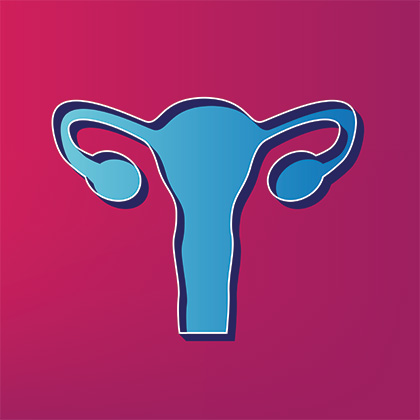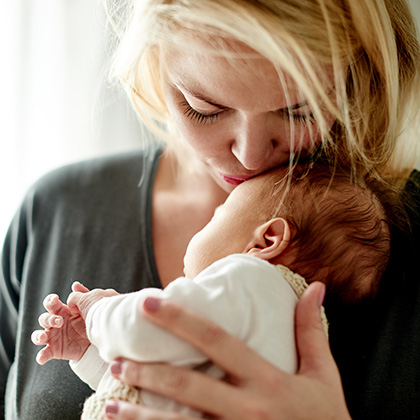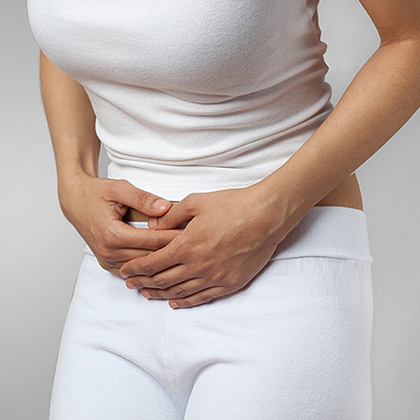
If you’re serious about exercise and training, you may well keep track of your training progress and perhaps also what you eat. But do you also track your menstrual cycle?
We’ve all had days when we couldn’t wait to get to the gym, when everything fell into place and training didn’t seem like a chore. But it’s highly likely we’ve also experienced times when it was a challenge to summon up the energy to exercise in the first place. These highs and low can all be attributed to one thing – the menstrual cycle. Indeed, it’s the fluctuations of hormones in your cycle that can turn you into a world-class athlete-in-the-making one day and a moody couch potato just a few days later.
If you’re not particularly aware of how your cycle can influence your workouts, it’s not surprising. The world of sports studies has up until fairly recently been very much male dominated. Scientific sports studies have tended to concentrate on results in men, rather than in women, with most carried out using only male participants.
However, more recently sports scientists are realising the results from male-based studies don’t automatically apply to women. The upshot is that these days an increasing number of sports studies are being carried out using female participants too. And one area that’s attracting a lot of interest is the way the menstrual cycle affects female sports performance. It’s still early days though, so there’s not a lot of high-quality published evidence yet. But as more female-led studies are carried out, this will change.
This new approach has led to the menstrual cycle being seen as a factor that has a significant impact on training and performance, rather than something to simply be put up with. And more and more professional sports women are taking their cycles into account while planning their training and playing schedules. Not that long ago, for example, the Chelsea FC women’s football team made the news when one of its players announced they sync their training regimes with their menstrual cycles (i).
Understanding your menstrual cycle
The key to making your cycle work for you is to learn how to tune in to the various phases and understand how each phase affects you personally. After all, not all menstrual cycles are the same. They can vary in length, for instance: the average cycle lasts 28 days, but cycles can vary from 21 to 38 days. And during that time your reproductive hormones fluctuate significantly and influence how you feel not just physically but emotionally too.
In general, you may feel much more energetic in the later stages of the first half of your cycle, when your oestrogen levels are high. During this period you may experience quicker recovery times and increased motivation too. But when your oestrogen is low – typically in the weeks running up to and during your period – you may feel less energetic and it may be harder for you to recover as quickly as when your oestrogen was high. Knowing when all these things are likely to happen could help you put strategies in place that might help you train smarter and better.
It’s also a good idea to be aware of your cycle as it can help pinpoint problems that can sometimes lead to more serious issues. For instance, if you’ve missed your period three or more times in a row it could be a sign that you have amenorrhoea. This can be a symptom of an underlying medical condition such as polycystic ovary syndrome (PCOS) or an overactive thyroid, so if you find you’ve missed your period more than just once or twice it’s a good idea to see your GP for advice.
Tracking your cycle can also help with other things too. A growing number of women now adapt not just their exercise routine but their diet, social life and even important work events to the different phases of their cycles. This is often called cycle syncing, a concept introduced by nutritionist Alisa Vitti in her book WomanCode (Harper Collins, 2014).
What happens during the menstrual cycle
There are two main phases of the menstrual cycle:
-
The follicular phase takes place during the first half of your cycle, leading up to the release of an egg (ovulation). In a typical 28-day cycle this phase tends to last from day one to 14.
-
The luteal phase is the second half, which includes and follows ovulation (days 15 - 28).
During these phases your reproductive hormones take turns in rising and falling, the main players being oestrogen, progesterone, follicle-stimulating hormone (FSH) and lutenising hormone (LH).
Here’s what happens in a little more detail:
Menstruation
The day your period starts marks the beginning of the cycle – day one. Your levels of oestrogen and progesterone are low at this time, but you’re also starting to produce FSH to stimulate the growth of new follicles, small sacs filled with fluid found in your ovaries that release eggs.
This phase usually signals the end of premenstrual symptoms (PMS – see Premenstruation, below), but some women may experience symptoms with their period too, including cramps, backache, fatigue, bloating and menstrual migraines. You may also feel your concentration levels are low, but the good news is your mood should start to improve after the first few days.
Should you exercise?
Many women wonder whether they should exercise while they’re having their period, and the short answer is yes – but it’s also important to listen to your body and avoid pushing yourself too hard, especially during those first few days. You probably won’t feel like doing anything too vigorous anyway, so try doing some low-intensity workouts such as walking, yoga, Pilates, swimming or low-impact cardio.
If you can manage it staying active can help, since physical activity releases feel-good hormones in your body called endorphins that put you in a better mood. There’s even evidence to suggest exercise may help with menstrual cramps, with one small-scale Korean study finding that women who did yoga once a week for 12 weeks had reduced cramps and distress compared with those who didn’t exercise (ii).
Should you change what you eat?
This is no time to restrict carbs in your diet, as your body may be craving them during this phase. But instead of indulging in less-healthy comfort foods, opt for complex carbs such as wholegrains, beans, pulses and vegetables, while making sure you get some protein and healthy fats in your meals too. In the meantime, if you experience cramps with your period it may be a good idea to avoid foods that could make you feel bloated, including salty foods and sugary processed foods.
Also try getting more magnesium in your diet by eating nuts, seeds, tofu, wholegrains, leafy greens and bananas. Now may also be a good time to indulge in some good-quality dark chocolate, since chocolate is also a good source of magnesium (the darker the better). Also try to eat plenty of iron-rich foods, especially if you have heavy periods (good sources of iron include red meat, beans, nuts, dried fruit and fortified cereals).
Post-menstruation
Your hormone levels will still be on the low side for the four or five days after your period finishes. But your FSH levels are still rising, and your follicles are starting to produce oestrogen.
At this time you’ll probably feel more energetic and competitive than you did a few days ago. So why not take advantage of it by pushing yourself a little harder? Try doing a few more reps, spend a few more minutes on the treadmill or tackle something more demanding such as high-intensity interval training (HIIT), running, boxing or circuit training.
Pre-ovulation
During the next few days – the last in the first half of your cycle – your body is preparing to release an egg. Your oestrogen levels are still rising, making you feel more motivated to work out.
Now’s the time when you’ll sail through that HIIT session, or you could try something else that’s equally energetic such as spinning or working out with heavier weights. It’s also a good time to schedule an early morning exercise class or session, because you’ll feel much more up for it than at other times during your cycle. And because your confidence will be high too you may feel more like working out with friends or taking part in competitive or team sports.
However take care, as research suggests women are more likely than men to experience sports injuries during the menstrual cycle phase that leads up to ovulation (iii). So if you feel like going all out, remember to warm up and cool down properly before and after your workout, and try not to overstretch.
Ovulation
Ovulation usually takes place in the middle of your cycle – so if you have an average 28-day cycle, it will typically happen on or around day 14. This is when your body releases an egg from one of your follicles, so you’re at your most fertile and your sex drive should be at its peak. Your oestrogen levels will be high too, and your body will produce a surge of LH to trigger the egg release.
During the few days on and around ovulation you should feel at your best. Your energy levels will be at their highest, and it’s likely you’ll be more motivated to train than at any other time of the month. Take advantage of the way you feel by doing high-intensity workouts, which you should manage without any trouble – partly because your progesterone levels should still be low at this point, so your overall pain tolerance should be high.
If you’re looking to achieve your personal best, this is an ideal time to go for it.
Post-ovulation
Following ovulation your body starts secreting higher levels of progesterone as well as oestrogen in preparation for the egg – which at this time is travelling down one of your fallopian tubes – to be fertilised.
At this time you’ll probably notice your motivation and your energy levels are starting to dip, so try turning the exercise intensity down a notch or two.
Premenstruation
While your oestrogen and progesterone levels peak at the beginning of this phase, they soon drop if the egg your ovary has released hasn’t been fertilised (in other words, if you haven’t conceived). This can trigger a range of PMS symptoms, including mood swings, anxiety, irritability, tiredness, sleep problems, breast tenderness, headache and bloating or stomach pain.
If you experience any of these symptoms it’s natural to want to skip your exercise session. But if you can manage it, doing some gentler exercise could actually be beneficial at this stage. For instance there’s evidence yoga may help reduce many premenstrual symptoms (iv). Alternatively you could try going for a walk or swimming – or anything that’s more restful and reviving rather than strenuous.
Meanwhile if you’re affected by food cravings in the couple of days before your next period starts, it’s a good idea to try eating more fibre, as this can help you feel more satisfied and less likely to crave something sugary (fibre-rich foods include fruit, vegetables and wholegrains).
How to track your menstrual cycle length?
Menstrual cycles vary from one woman to the next, so if you want to become more familiar with how yours works it’s a good idea to keep track of the different phases. This can help you decide the best type of training to do at different times, so that you’re working with your cycle rather than against it.
One easy way to figure out the phases of your cycle that influence your energy levels, mood and exercise performance is to use a cycle tracking app. Many of these are geared towards ovulation and fertility, though some also cater for active women who want to calculate their energy levels and ability to exercise throughout the month. Here are a few apps you may find useful:
-
FitrWoman not only helps you track your cycle but also offers personalised training and nutritional suggestions tailored to your changing hormone levels. This programme is thought to be used by athletes around the world, including the US Women’s National Soccer Team that won the 2019 FIFA Women’s World Cup. The FitrWoman app is free from the App Store and Google Play.
-
Clue tracks your period and ovulation, but also aims to help you understand how your body works during the various phases of your cycle and allows you to log your exercise and energy levels. Available free at the App Store and Google Play.
-
MyFlo – from Alisa Vitti – describes itself a functional medicine period tracker and hormone balancing app and aims to help you use your cycle to choose what’s easiest for you at the ideal time for your brain and body – including, for instance, when you should do a bootcamp workout or have a more gentle session such as yoga. Download it from the App Store (£1.99) or Google Play (£1.89).
If apps aren’t your thing you can use the old-fashioned method of keeping a written record of your cycle, noting how you perform and feel on different days. It could take up to three months, but you should start seeing patterns emerge that will help you identify how long each phase in your cycle lasts. This knowledge could help you understand that your fluctuating hormones are the reason the high-intensity workout you completed without hardly breaking a sweat one week was tough-going the next.
Remedies for period problems
Exercise may help with some of the unwanted symptoms associated with the menstrual cycle. But certain nutritional supplements may also be useful, especially if you experience problems such as heavy or painful periods.
Low iron or iron deficiency, which can lead to anaemia, is a common problem for many women affected by heavy periods. This can cause a range of symptoms, including tiredness, lack of energy, headaches and breathlessness. Taking an iron supplement is the usual treatment for anaemia, with one study suggesting iron supplements may help reduce menstrual bleeding in women with heavy periods and anaemia (v).
You can also protect against iron deficiency by taking a good-quality multivitamin and mineral supplement – look for one with a good spread of nutrients, including iron, vitamin B6, selenium, chromium and iodine.
Natural remedies for period pain
If you’re affected by cramps and painful periods there is some evidence that taking a magnesium supplement may be useful. A couple of double-blind, placebo-controlled studies involving women with dysmenorrhoea suggests taking magnesium may significantly improve symptoms (one of the studies suggests magnesium may work by reducing levels of a prostaglandin – a type of hormone – thought to cause period pain) (vi).
More recently, experts investigating the use of magnesium in several women’s gynaecological health conditions suggest magnesium supplements may be effective for the prevention of dysmenorrhoea, PMS and menstrual migraine (vii).
Meanwhile the omega-3 fatty acids found in fish oils – called eicosapentaenoic acid (EPA and docosahexaenoic acid (DHA) – are widely considered to help reduce inflammation, which may soothe period pain. Indeed, there is some evidence that suggests omega-3s may relieve painful periods by affecting the metabolism of prostaglandins and other factors that cause pain and inflammation (viii).
Tracking your period could help make a big difference in your training and sports performance – after all if it works for the professionals, why not you too? For more helpful articles on a range of health conditions, feel free to visit our health library. Or visit our sports articles page for lots of help with getting the best out of your exercise regime.
References:
- Available online: https://www.independent.co.uk/life-style/health-and-families/fran-kirby-lionesses-chelsea-fc-menstrual-cycle-training-schedule-a9108686.html
- Nam-Young Yang, Sang-Dol Kim. Effects of a Yoga Program on Menstrual Cramps and Menstrual Distress in Undergraduate Students with Primary Dysmenorrhea: A Single-Blind, Randomized Controlled Trial. J Altern Complement Med. 2016 Sep:22(9):732-8. Available online: https://www.liebertpub.com/doi/10.1089/acm.2016.0058
- Herzbert SD et al. The Effect of Menstrual Cycle and Contraceptives on ACL Injuries and Laxity: A Systematic Review and Meta-analysis. Orthop J sports Med. 2017 Jul 21;5(7):2325967117718781. Available online: https://www.ncbi.nlm.nih.gov/pmc/articles/PMC5524267/
- Su-Ying Tsai. Effect of Yoga Exercise on Premenstrual Symptoms among Female Employees in Taiwan. Int J Environ Res Public Health. 2016 Jul; 13(7): 721. Available online: https://dx.doi.org/10.3390%2Fijerph13070721
- Taymor. ML, Sturgis. SH, Yahia. C. The etiological role of chronic iron deficiency in production of menorrhagia. JAMA. 1964;187:323-327. Available online: https://jamanetwork.com/journals/jama/article-abstract/1161803
- Seifert. B, Wagler. P, Dartsch. S, et al. Magnesium—a new therapeutic alternative in primary dysmenorrhea. Zentralbl Gynakol. 1989;111:755-760. Available online: https://pubmed.ncbi.nlm.nih.gov/2675496/ Fontana-Klaiber. H, Hogg. B. The therapeutic effects of magnesium in dysmenorrhea. Schweiz Rundsch Med Prax. 1990;79:491-494. Available online: https://europepmc.org/article/med/2349410
- Parazzini . F, Di Martino. M, Pellegrino. P. Magnesium in the gynecological practice: a literature review. Magnes Res. 2017 Feb 1;30(1):1-7. Available online: https://pubmed.ncbi.nlm.nih.gov/28392498/
- Harel. Z, Biro. FM, Kottenhahn. RK, et al. Supplementation with omega-3 polyunsaturated fatty acids in the management of dysmenorrhea in adolescents. Am J Obstet Gynecol. 1996;174:1335-1338. Available online: https://pubmed.ncbi.nlm.nih.gov/8623866/
Related Posts
Disclaimer: The information presented by Nature's Best is for informational purposes only. It is based on scientific studies (human, animal, or in vitro), clinical experience, or traditional usage as cited in each article. The results reported may not necessarily occur in all individuals. Self-treatment is not recommended for life-threatening conditions that require medical treatment under a doctor's care. For many of the conditions discussed, treatment with prescription or over the counter medication is also available. Consult your doctor, practitioner, and/or pharmacist for any health problem and before using any supplements or before making any changes in prescribed medications.

Christine
Christine Morgan has been a freelance health and wellbeing journalist for almost 20 years, having written for numerous publications including the Daily Mirror, S Magazine, Top Sante, Healthy, Woman & Home, Zest, Allergy, Healthy Times and Pregnancy & Birth; she has also edited several titles such as Women’ Health, Shine’s Real Health & Beauty and All About Health.
View More



